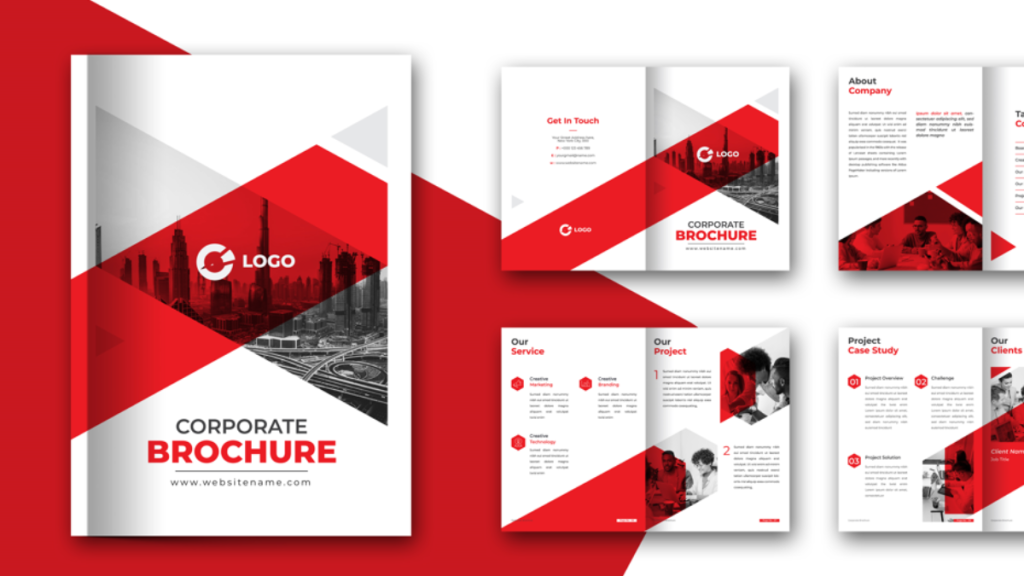A strong tool for promoting your firm to prospective customers, partners, and stakeholders is a well-designed company profile. It acts as a thorough overview of your business, showcasing your accomplishments, principles, and strong points. In order to create a corporate profile that effectively engages your audience and shows the professionalism of your brand, careful consideration of both design aspects and content is necessary. This article will discuss best practices for designing corporate profiles and offer advice on how to make a profile that makes an impact.
1. Understand Your Audience
The Importance:
Before starting your design, it’s essential to understand your target audience. Tailoring your company profile to address the needs and interests of your audience ensures that it resonates with them.
Tips:
- Identify Key Stakeholders: Determine who will be reading the profile, such as potential clients, investors, or partners.
- Research Preferences: Understand the preferences and expectations of your audience regarding design and content.
- Customize Content: Tailor the content and design to meet the specific needs and interests of your target audience.
2. Craft a Compelling Narrative
The Importance:
A compelling narrative helps convey your company’s story, mission, and values in a way that engages and connects with your audience.
Tips:
- Define Your Brand Story: Clearly articulate your company’s history, mission, and vision.
- Highlight Achievements: Showcase key milestones, accomplishments, and unique selling points.
- Use a Consistent Tone: Maintain a consistent tone and style throughout the profile to reflect your brand’s personality.
3. Focus on Visual Appeal
The Importance:
Visual appeal plays a crucial role in capturing attention and making your company profile stand out. A well-designed layout enhances readability and creates a professional impression.
Tips:
- Use High-Quality Images: Include high-resolution images that represent your brand and services.
- Incorporate Branding Elements: Utilize your company’s colors, fonts, and logo to reinforce brand identity.
- Design for Readability: Choose legible fonts and ensure a clean, uncluttered layout for easy reading.
4. Organize Content Effectively
The Importance:
Organizing content in a logical and structured manner ensures that readers can easily find the information they need.
Tips:
- Create a Clear Structure: Use headings, subheadings, and bullet points to organize content.
- Prioritize Key Information: Place the most important information, such as your company’s mission and services, near the beginning.
- Include Sections: Common sections to include are an introduction, services offered, company history, team members, and contact information.
5. Incorporate Testimonials and Case Studies
The Importance:
Including testimonials and case studies adds credibility to your company profile and demonstrates your success and expertise.
Tips:
- Select Relevant Testimonials: Choose testimonials from satisfied clients or partners that highlight your strengths.
- Showcase Case Studies: Present detailed case studies that illustrate your company’s ability to deliver results.
- Use Quotes and Data: Incorporate direct quotes and data to add authenticity and impact.
6. Ensure Consistency with Your Brand Identity
The Importance:
Consistency in design reinforces your brand’s identity and helps create a cohesive and professional image.
Tips:
- Align with Branding Guidelines: Follow your company’s branding guidelines for colors, fonts, and imagery.
- Maintain a Uniform Style: Ensure that the design style and tone are consistent with your other marketing materials.
- Update Regularly: Keep the profile up-to-date with the latest information and branding elements.
7. Optimise for Digital and Print Formats
The Importance:
A versatile company profile should be effective in both digital and print formats, ensuring it reaches your audience through various channels.
Tips:
- Design for Digital: Ensure that the profile is optimized for digital viewing, including mobile devices. Consider interactive elements for digital versions.
- Prepare for Print: Create a print-ready version with high-resolution images and appropriate formatting for physical distribution.
- Test Across Platforms: Check how the profile appears on different devices and print formats to ensure consistency.
8. Include a Strong Call-to-Action
The Importance:
A call-to-action (CTA) guides readers on the next steps they should take after reviewing your profile.
Tips:
- Be Clear and Direct: Use clear and actionable language for your CTA.
- Highlight Contact Information: Make it easy for readers to get in touch with you by including prominent contact details.
- Offer Incentives: Consider offering incentives or prompts for readers to engage further, such as scheduling a consultation or requesting a demo.
Conclusion
Creating a corporate profile that works demands careful consideration of both design and content. You can make a polished and engaging profile that highlights your business’s advantages and draws in viewers by knowing your target, developing an engaging story, emphasizing visual appeal, and skillfully arranging material. To reach your business objectives and leave a lasting impression, DataNext provides professional support in creating an exceptional corporate profile.

